Is it inspired or irresponsible to call Donald Trump’s border wall prototypes ‘art’?
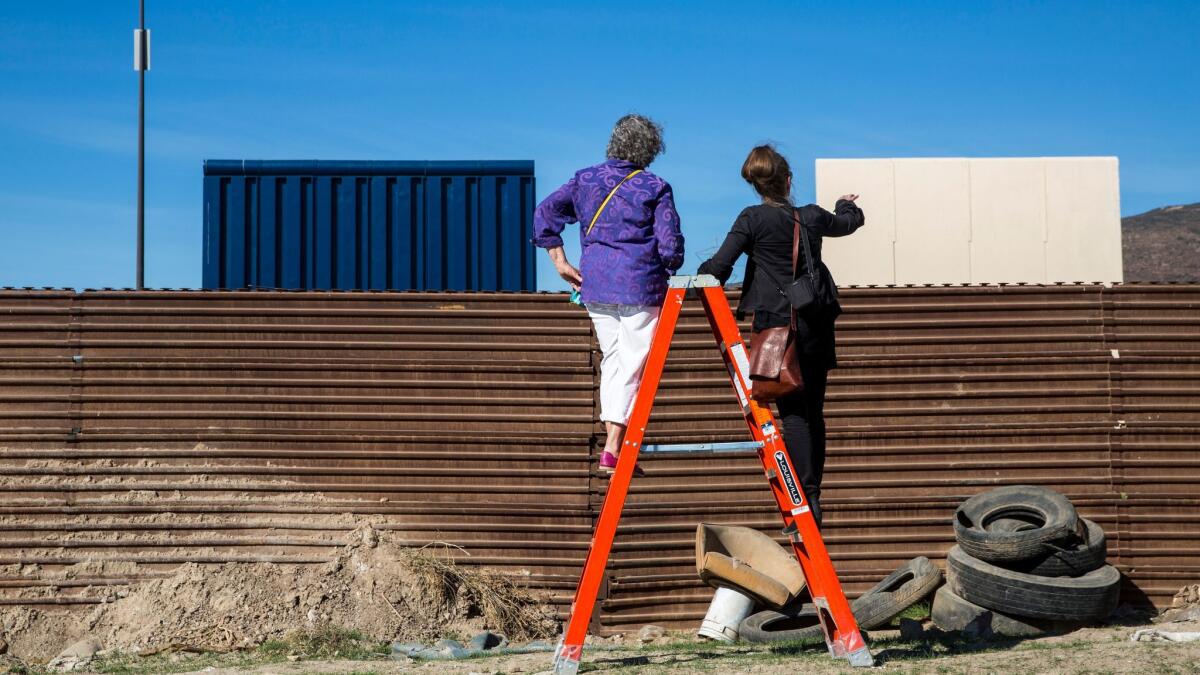
It’s a warm weekday afternoon and I am in a Mercedes-Benz Sprinter van, cruising through Tijuana’s industrial zone, past bustling machines shops and warehouse factories advertising $80 hiring bonuses. My companions are a handful of curious tourists and journalists, as well as one art historian.
We are en route to a spot just south of the U.S.-Mexico border to view the U.S. Customs and Border Protection prototypes for Donald Trump’s long-promised wall. For $25 a head, our tour, arranged by Swiss-born artist Christoph Büchel, includes round-trip transportation from downtown San Diego to Tijuana and access to a stepladder (for unimpeded views of the prototypes), plus gluten-free snacks.
Büchel’s idea behind the tours is to have the border wall prototypes designated as a national monument.
“The eight border wall prototypes have significant cultural value and are historical land art,” states the website for a nonprofit entity Büchel launched called MAGA. (“We make art great again,” the website promises.) He also started an online petition to draw public support.
It’s like Donald Trump said, ‘Go to Toys R Us and bring me all the toys, and I will choose the best one.’
— Alexis Franco Santana, Tijuana resident
Büchel doesn’t lead the tours. In fact, even as the project has generated headlines, the artist has remained decidedly low-profile. The website, borderwallprototypes.org, doesn’t mention his name. And he has granted only one interview on the subject — not to any media on the actual border, but to the New York Times, whose headquarters is 2,800 miles from the prototype site.
“There is a sculptural value these things have,” Büchel is quoted as saying. “I thought about Stonehenge. It’s so strong.”
But architect René Peralta, who has watched the prototype construction from the Tijuana side of the border, has less interest in the project’s sculptural value.
“It would be irresponsible, easy and lazy to consider it as an aesthetic object,” the founder of the firm Generica Arquitectura y Diseño Urbano and professor at San Diego State University says via email. “Rather than its physical form, I think its danger lies in something more macabre: the politics, ideology and viewpoints behind it.”
On Tuesday, prompted by Los Angeles artist Gelare Khoshgozaran, a group of 25 culture figures submitted an open letter protesting Büchel’s idea, calling it “the promotion of white supremacy.”
The MAGA initiative is not the first time Büchel has been a political provocateur. In 2015, he transformed a defunct church in Venice, Italy, into a working mosque for the Venice Biennale — a test of the city’s tolerance toward Muslims. On another occasion, he converted a high-brow London gallery into a functioning senior center. His chaotic, often dystopic, installations regularly require visitors to sign accident waivers — just as we do before our trip into Mexico.
Our van skillfully weaves through traffic as we make our way through Tijuana, to a road that runs along the current border wall, a 10-foot steel barricade crafted from recycled Vietnam-era landing mats (the portable landing platforms employed by helicopters).
Our tour guide, Michael Diers, an art historian from Germany who studies art and political systems, is familiar with walls — in his case, the Berlin Wall, which as a young man he would cross from west to east to shop at East German bookshops.
“I was very much concerned about the other side of the wall,” he says. “We lived on the ‘better’ side of the wall. And it’s just by chance — what side you happen to be born on.”
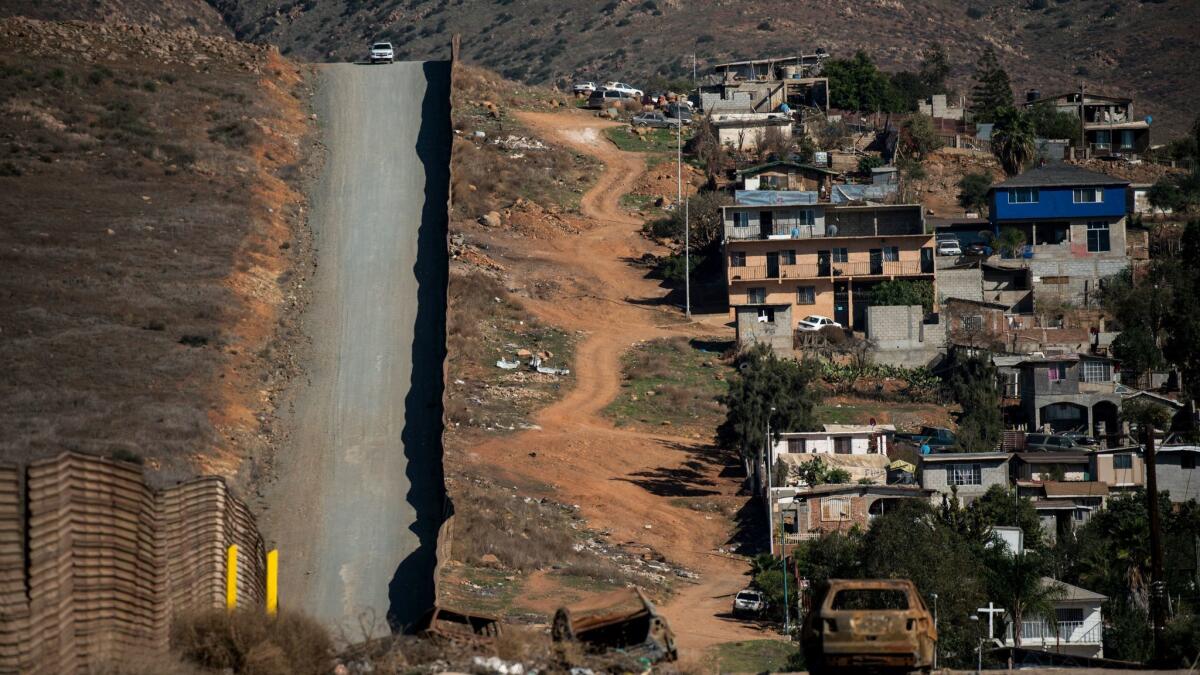
I ask Diers if it’s appropriate to hail the aesthetics of the border prototypes, given their xenophobic political purpose.
“It’s always about aesthetics,” he says. “We live in a media world, and you have to present yourself. In 1920s Germany, everybody wore black suits with white shirts because it looked good in black and white photography. Here, the politicians wear red ties and blue suits because they look like the flag — it’s the allegory of the Stars and Stripes.
“Aesthetics is politics.”
Diers says that over its existence, the Berlin Wall was also aestheticized.
“When it started, it was very brutal,” he adds. “But it was refined and polished over time.”
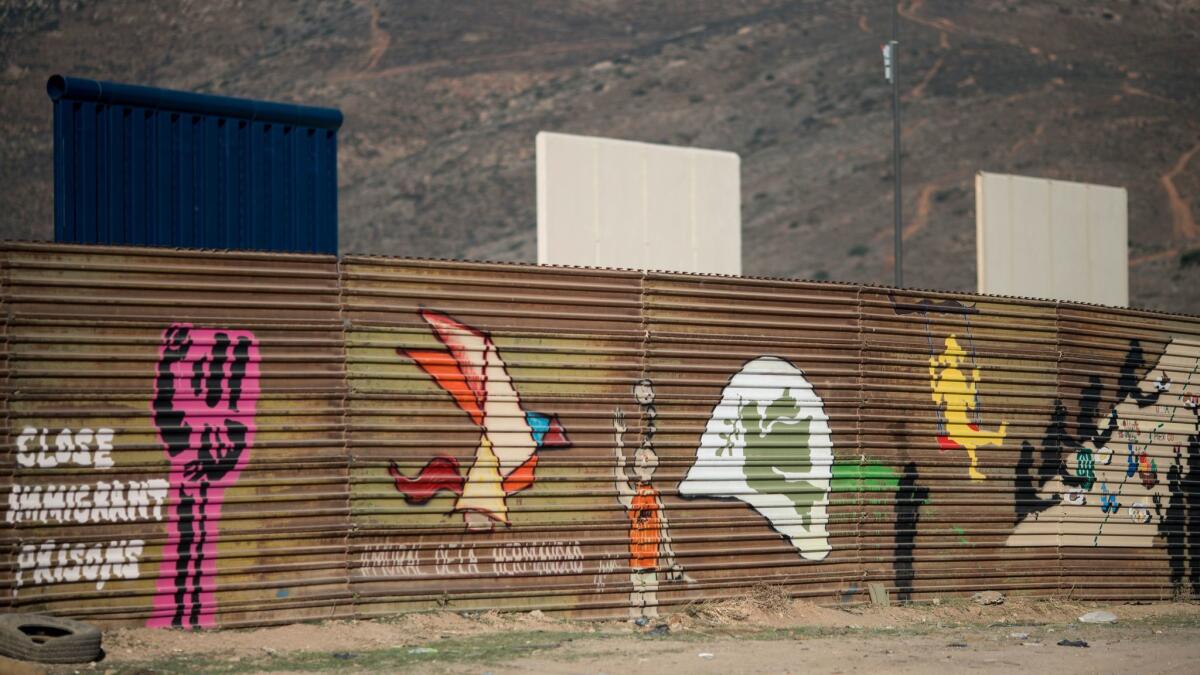

Büchel’s MAGA website doesn’t delve into politics. In fact, in his lone interview, he refused to say much about his beliefs: “My political position, that’s not interesting in this context.”
Even so, when Hauser & Wirth, which represents Büchel, announced the prototype tours on its Twitter feed, the gallery was greeted with a withering dose of invective.
“Now I understand why I don’t visit this gallery,” stated one respondent. Another replied with a GIF of the Berlin Wall under construction.
Marc Payot, partner and vice president at Hauser & Wirth, a European gallery with a branch in downtown Los Angeles, responded via a statement that the prototypes were intended to “stand as evidence of bigotry and fear in American culture, and serve as catalysts for transforming political discourse. The fact that PROTOTYPES has tapped into the public’s anxieties reinforces why this is such a relevant project.”
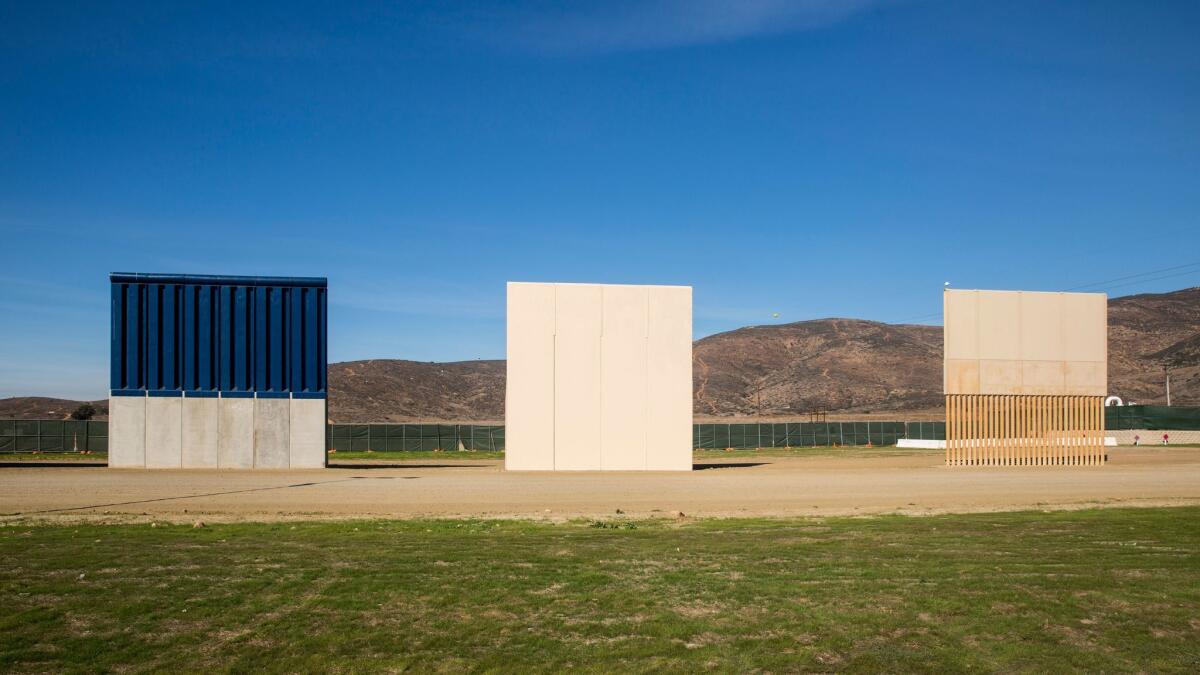
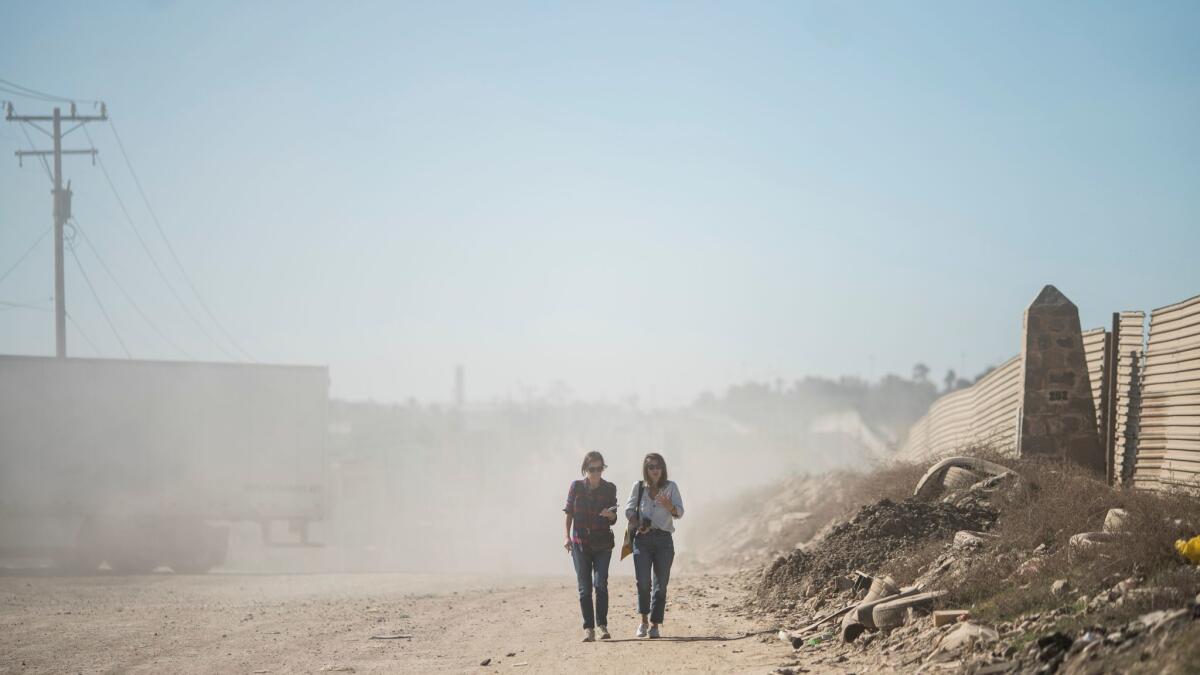
We reach the intersection of Cuahtémoc Norte and Juventud Oriente, where a small roundabout serves as memorial to those who have died crossing the border. A European curator who is working with Büchel on the prototypes project — but who declines to go on the record — points out the memorial to the group.
I ask her and Diers whether they had ever visited Tijuana before working on Büchel’s prototypes project. Neither had.
Within 20 minutes, we are standing in a hilly colonia on the eastern fringes of Tijuana, just before the metal border wall.
On the Mexican side of the dividing line are the junkyards that contend with the overflows of waste generated by Tijuana’s maquiladoras, which craft the cheap goods that will ultimately end up in the U.S. On the other — al otro lado — are the looming prototypes.
Just south of the fence sits one of the stone obelisks that marked the border during the late 19th century. Diers notes that the simple presence of the obelisk was once enough to mark the international dividing line: “It was a conceptual border more than a real border.”
Since they were completed, the border wall prototypes have turned into architectural celebrities of sorts — debated on the news, filmed by drones and scrutinized by critics. The Times’ architecture critic, Christopher Hawthorne, describes them as “banal and startling,” a combination of “architectural exhibition and the new nativism rolled into one.”
Beyond their political implications, it’s easy to see why the structures have drawn so much attention: They are absurd — bloated security theater in a color palette befitting a suburban subdivision. (So many shades of putty.) It was only a matter of time before an enterprising artist horned in on the action.
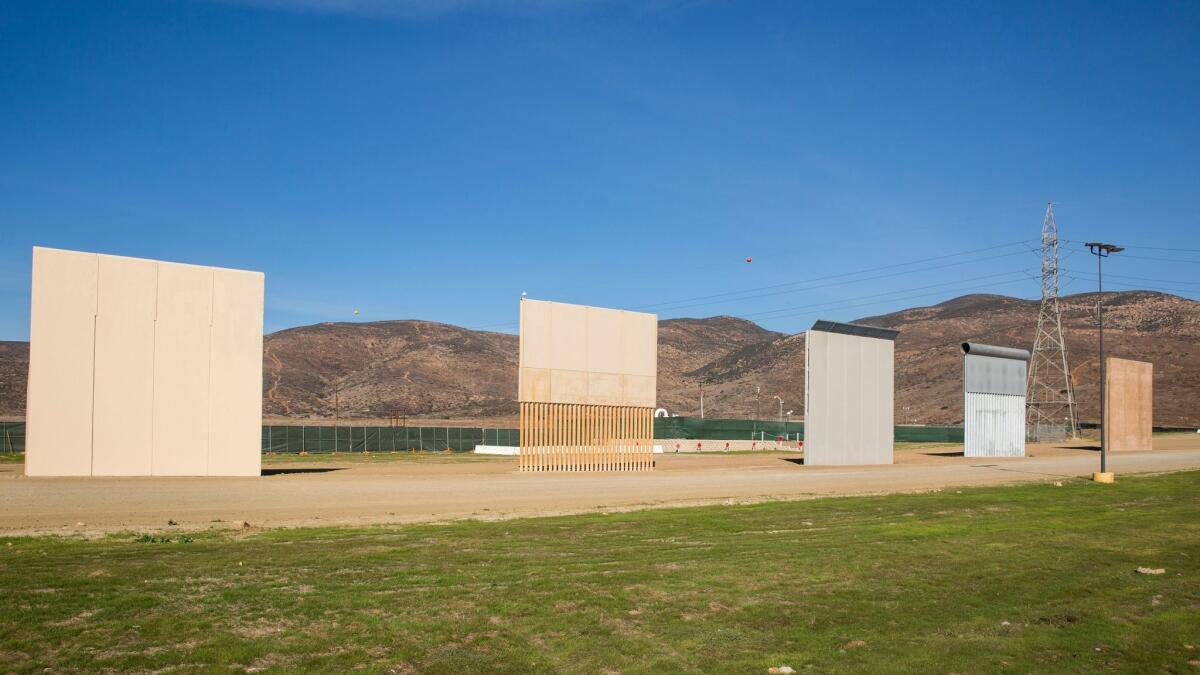
All the attention has also had the effect of turning this humble settlement into a tourist attraction. A folding ladder is placed near the metal wall, and we each take turns climbing up to get unobstructed pictures of the prototypes.
Soon we are joined by Alexis Franco Santana, an ebullient 22-year-old tijuanense who lives in a small room across from the site. Santana, outfitted in white tank, red headphones and constantly pinging cellphone, says the structures have drawn visitors from all over the world.
He thinks the prototypes are laughable.
“It’s like Donald Trump said, ‘Go to Toys R Us and bring me all the toys, and I will choose the best one,’” he says. “They can make the wall from here to the sky and we can find a way to get around it. Los mexicanos tienen maña.” Mexicans have knack.
His neighbor, Juan Manuel Hernandez Lozano, takes a dimmer view.
Hernandez was born in Mexico but was taken to Los Angeles without papers when he was about 5. He spent almost his entire life in Los Angeles and speaks English laced with the musical cadence of the Eastside. To prove his real-deal L.A.-ness, he shows me a Raiders tattoo.
Nine years ago, he was deported. His family lives in L.A., but he’s stuck in Tijuana. In that time, he has missed the funerals of both parents and a brother.
“It’s been hard,” he says. “I got sick over here. I have cancer. I should have been dead a year ago.”
I ask him what he thinks of the idea of turning the prototypes into a national monument.
“It’s a racist thing,” he replies. “Why would they do something like that? What are they getting out of it?”
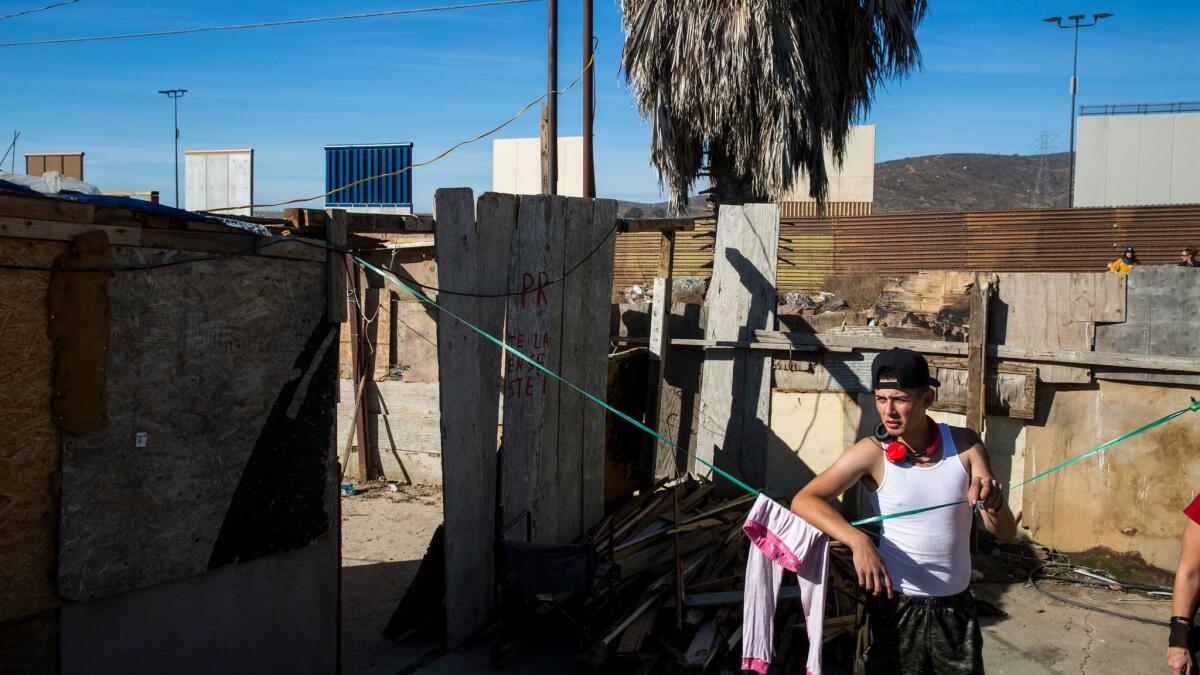
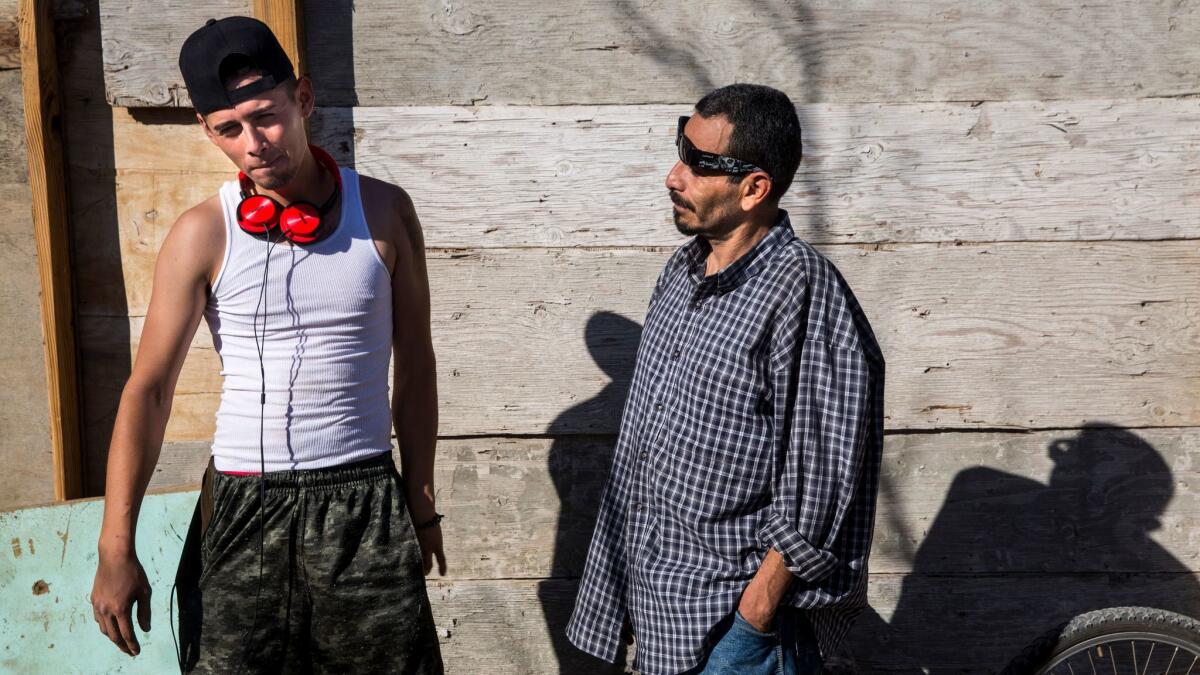
When the Manzanar internment camp was designated a national historic site by Congress in the 1990s, it was not without controversy. The camp, in the Owens Valley, had once harbored upward of 11,000 Japanese Americans, who had been interned there during a period of intense anti-Japanese paranoia during World War II.
Japanese American activists — among them, former internees — had called for protection of this contentious site as a way to remember this dark episode in U.S. history. (“A national symbolic step that must go forward,” activist Sue Kunitomi Embrey said at the time.)
But some groups fought the designation. In a letter to the National Park Service, which manages the site, one critic described the portrayal of Manzanar as an internment camp as “treason.” Others preferred that the camp be depicted as the benevolent provider of wartime “housing” for Japanese Americans.
The efforts to sugarcoat history ultimately failed. Manzanar is today one of the most prominent sites in the U.S. to commemorate the internment of Japanese Americans.
The making of a monument is a messy business. It requires unflagging advocates, inevitable detractors and a majority vote in Congress.
It also requires time.
Manzanar was declared a national historic landmark in 1985, four decades after it was shut down. It became a national historic site seven years later. And it all came as a result of a groundswell of support for the idea that this was history worth commemorating.
In the case of the border, that history is still being written. The border prototypes could become monuments to racist folly or reawakened white supremacy. All of it leads me to wonder what the reaction would have been in 1943 if a European artist had visited Manzanar, and then described the place as a “land art exhibition” in a press release.
Toward the end of the tour, Dier gathers us in a circle and asks what we think of the idea of turning the prototypes into a monument. One person says they could serve as “a monument to hubris.” Another says they could be preserved like an American Auschwitz. I suggest that in the spirit of the border, where U.S. goods and ideas are constantly being recycled by Mexico, perhaps we should allow the residents of Tijuana to dismantle the prototypes and use them to build something new.
Members of the group disperse to catch their final snapshots. I ask Santana, who has been hovering in the background, if he’s OK with turning the prototypes into art.
Not in their current form, he says. “If it’s going to be art, they should paint them. They could put a beach scene on one or a forest on the other. But they need to paint them, otherwise it’s not art.”
The group clambers into the van and we make our way back to the other side — the one where many of us, through accidents of fate, just happened to be born.
To read this article in Spanish, click here
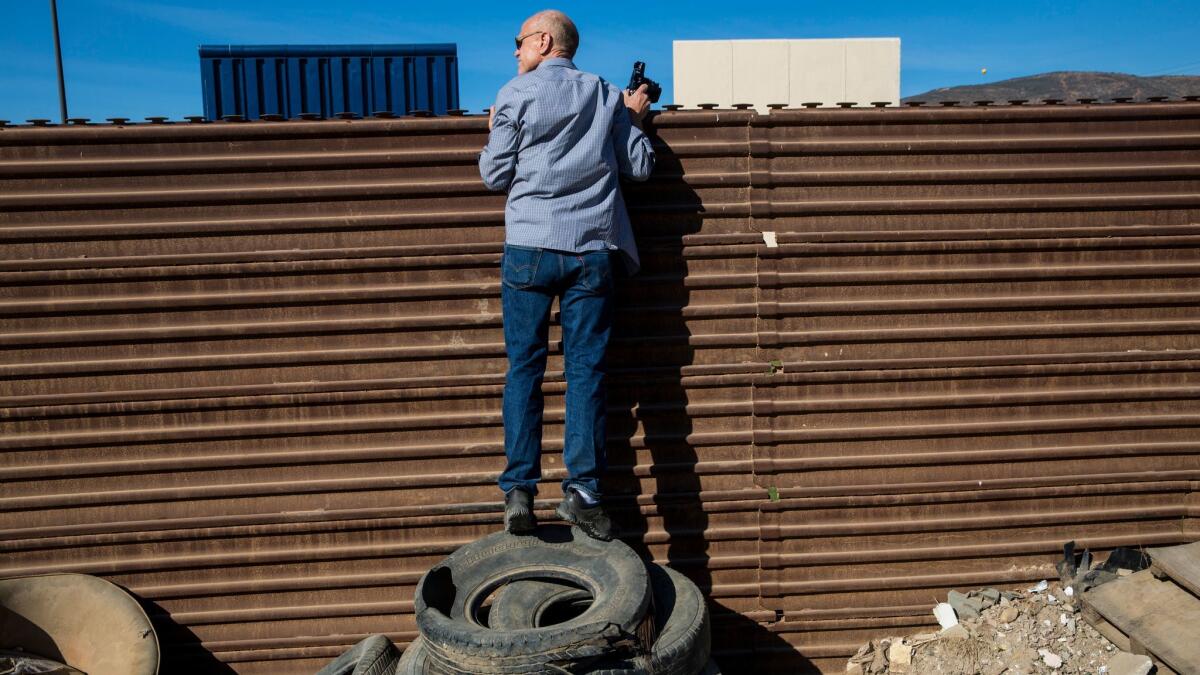
Sign up for our weekly Essential Arts & Culture newsletter »
ALSO
Trump’s border wall through the eyes of an architecture critic
Why two artists surveyed the U.S.-Mexico border ... the one from 1821
More to Read
The biggest entertainment stories
Get our big stories about Hollywood, film, television, music, arts, culture and more right in your inbox as soon as they publish.
You may occasionally receive promotional content from the Los Angeles Times.





